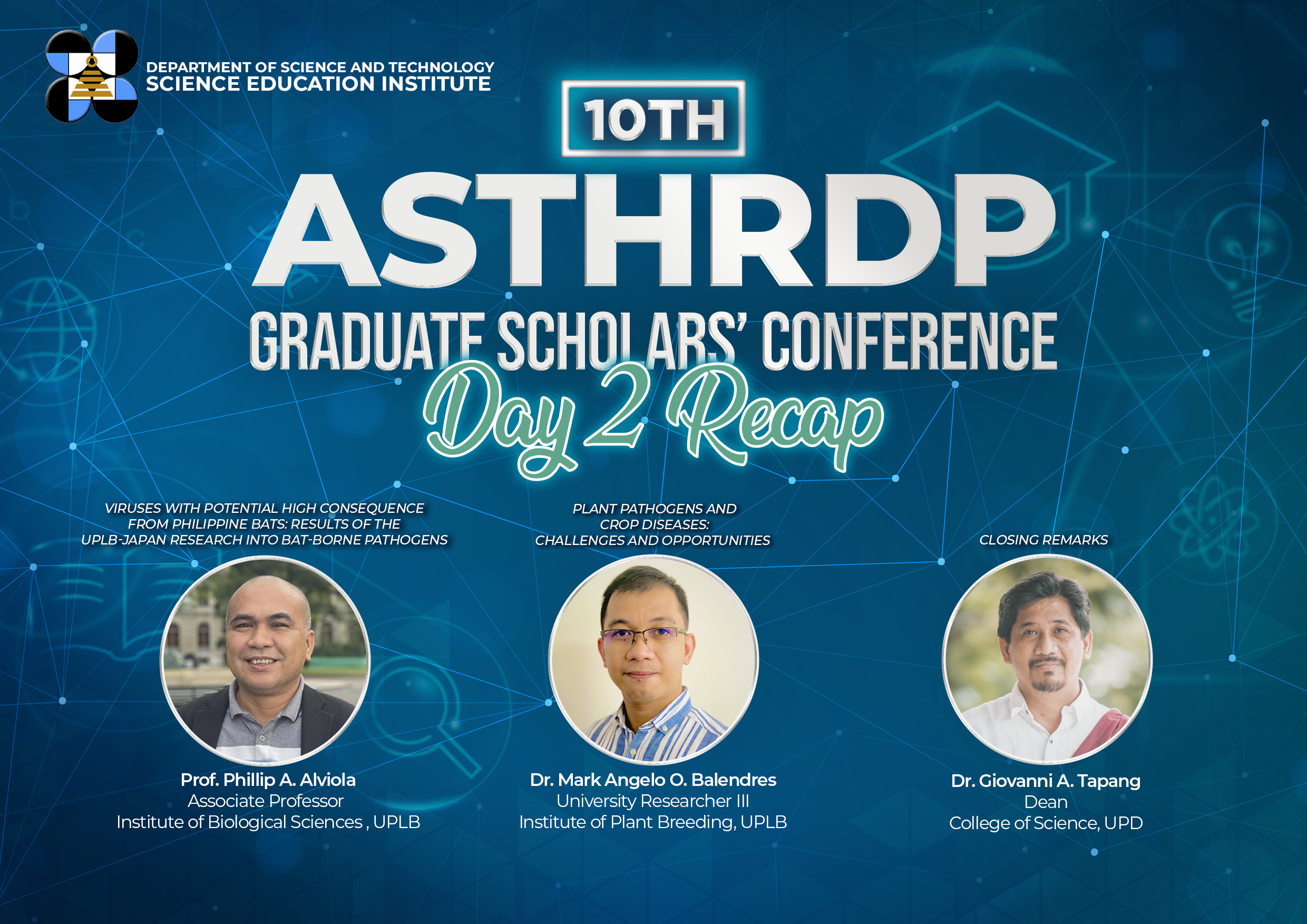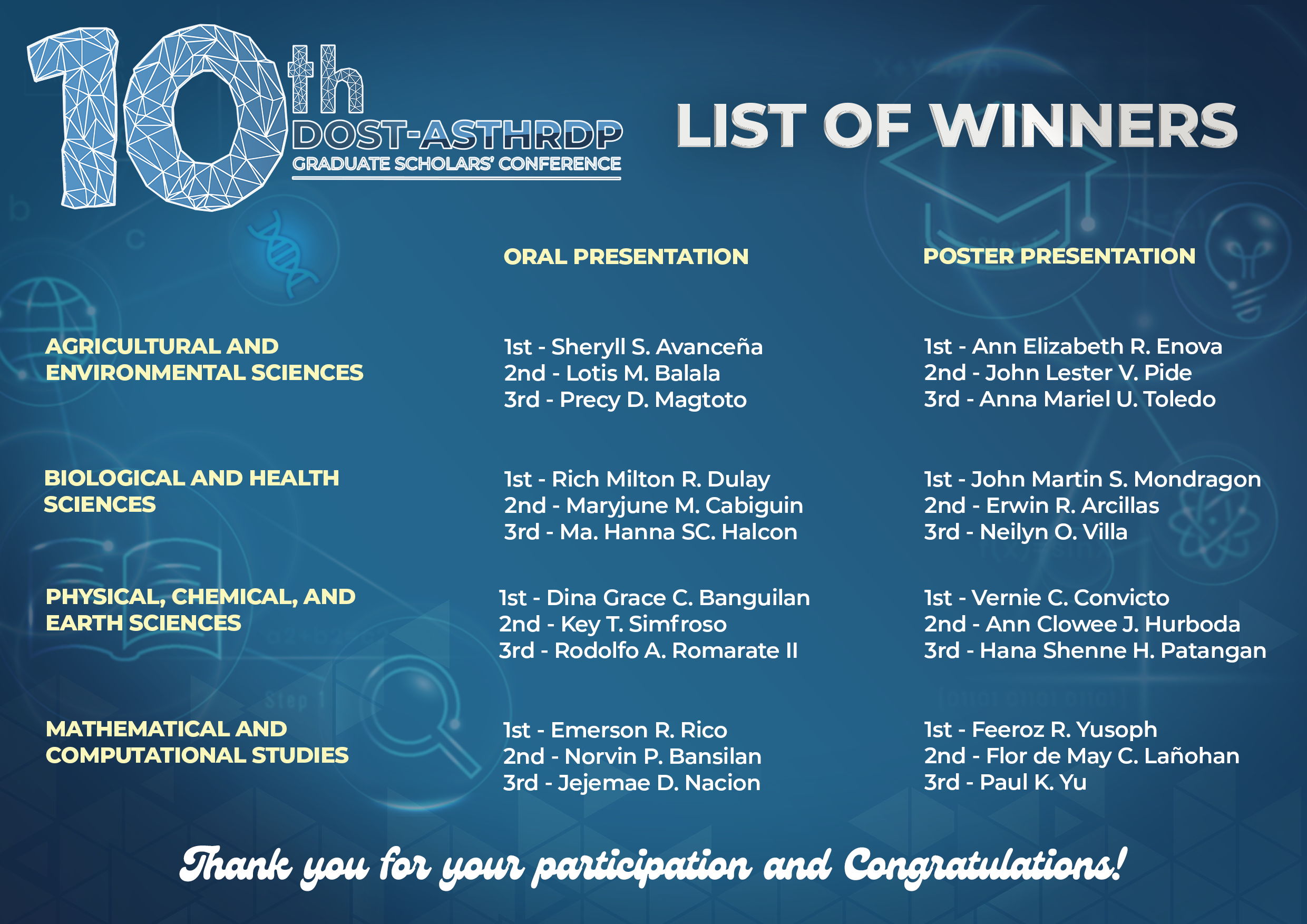
10th ASTHRDP Conference Summary of Proceedings Day 2 – September 23, 2022
In the first plenary session of the day, UPLB Institute of Biological Sciences Assoc. Prof. Phillip Alviola discussed his extensive years-long research into bat-borne diseases and the implications of his work on the present and future pandemics. His talk, entitled, “Viruses with potential high consequence from Philippine bats: Results of the UPLB-Japan research into bat-borne pathogens” noted the existence of several virus families common to bats in the Philippines that are very closely genetically related to human-infectious viruses being monitored by the World Health Organization. Apart from ebola and coronaviruses, hantaviruses were of particular concern because of their mortality rate of up to 75% – higher than the SARS-CoV-2 virus and “the stuff of nightmares,” Prof. Alviola warned. Moreover, he said that the widespread distribution and migration patterns of bats in the country means a high potential for outbreaks in the future, given the right circumstances. He and his colleagues are currently undertaking an in-depth multidisciplinary study of bats – including their habitat, migration patterns, and interactions with humans – to help anticipate possible future outbreaks and pandemics.
The last plenary presentation, by UPLB Institute of Plant Breeding Researcher Dr. Mark Angelo O. Balendres, entitled, “Plant pathogens and crop diseases: Challenges and opportunities” underscored the importance of crop protection and management in meeting the nutritional needs of the continually burgeoning global population, which the UN estimates to reach 9.7 billion people by 2050. Dr. Balendres pointed out the need for a better appreciation and public understanding of the various best practices surrounding plant health in farms, such as non-chemical pesticides and crop management methods: “We need more communication and awareness at the community level, particularly at the level of farmers. And we need more research on non-pesticide intervention,” he said. However, Dr. Balendres lamented the lack of skilled plant pathology researchers to address these concerns – a glut that was further aggravated by the COVID-19 pandemic, which severely limited opportunities for fieldwork and hands-on experience. However, he expressed hope that improved public communication and encouragement to pursue crop protection even at the high school level could help grow the research community and enable it to rise to the challenge.
The two-day ASTHRDP Conference was capped by a formal ceremony honoring scholars from across the country with refereed publications, as well as the announcement and awarding of the winners of the Oral and Poster Presentations at the Conference.
The day ended on a high note with closing remarks from UP Diliman College of Science Dean and 10th ASTHRDP Conference Chair Giovanni Tapang, who congratulated the attendees not just on their individual research but also on the community they had built through their hard work: “This years’ celebration would be impossible without you, our scholars – past, present, and even the future. We thank you all for sharing this with us… Padayon!” Dr. Tapang concluded.

